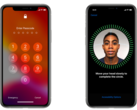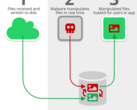This particular security weakness came about due to the way Apple's servers verified a user account during the "Sign in with Apple" login process. When logging in, a JSON Web Token is used to authenticate the account, and this token can contain the user's Apple ID email address depending on which options are selected.
Jain found that he could request a JSON Web Token for any legitimate Apple account and the signature would be verified as valid each time. A hacker only needed to know the email address associated with an Apple ID to get a validated token and obtain access to the account. Accounts using two-factor authentication (2FA) likely to be protected from this attack vector.
During the patching process, Apple reviewed server logs and found no evidence that anyone had exploited this flaw.
Bounty programmes are a popular way for tech companies to encourage white hat hackers (hackers who hack with permission) to try and find vulnerabilities in their software. These flaws get reported and patched before the bug is made public. Although many high-profile companies have bounty programmes, more substantial bounties aren't paid out very often since they are reserved for significant and critical vulnerabilities.
Loading Comments
I grew up in a family surrounded by technology, starting with my father loading up games for me on a Commodore 64, and later on a 486. In the late 90's and early 00's I started learning how to tinker with Windows, while also playing around with Linux distributions, both of which gave me an interest for learning how to make software do what you want it to do, and modifying settings that aren't normally user accessible. After this I started building my own computers, and tearing laptops apart, which gave me an insight into hardware and how it works in a complete system. Now keeping up with the latest in hardware and software news is a passion of mine.
> Expert Reviews and News on Laptops, Smartphones and Tech Innovations > News > News Archive > Newsarchive 2020 06 > Apple pays US$100,000 bounty to developer for finding critical login vulnerability
Craig Ward, 2020-06- 1 (Update: 2020-06- 1)



























